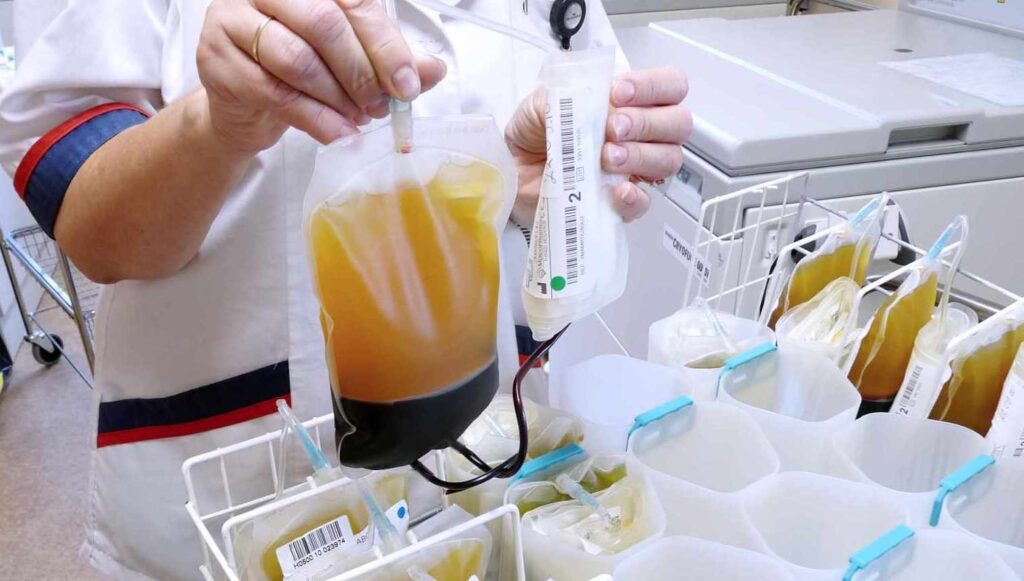Whole Blood
Whole blood is the so-called natural dose of blood, donated by a donor during blood donation, and it contains all blood components.
Whole blood serves as the starting material for the production of blood components.
Historically, blood transfusions were carried out with whole blood from person to person using a special transfusion system.
The transition to component therapy began in the 1970s, when whole blood started to be processed into red blood cell suspensions, fresh frozen plasma, cryoprecipitate, and platelet concentrate.
The advantage of component therapy was considered to be the extended shelf life and the ability to administer to the patient exactly what was deficient.

In the case of massive acute blood loss, the patient loses all components simultaneously, and coagulopathy may be the first symptom. Typically, a 1:1:1 ratio of blood components is used for massive transfusion. This transfusion results in a dilute mixture of blood components with a hematocrit of 29%, and clotting factors are diluted by about 62% compared to whole blood. In massive component therapy, anticoagulants and preservation solutions, which the patient does not need, are also transfused, further exacerbating coagulopathy and acidosis.
Whole blood doses have a hematocrit of 35-38%, and clotting factors are about 85% compared to pre-donation levels. Whole blood doses contain significantly less anticoagulant and preservation solution.
In the case of acute bleeding, the best option for rapid hemostasis would be donor whole blood, which contains all necessary components in the correct ratio.
Comparative studies between whole blood and component therapy in both military medicine and civilian trauma patients show that whole blood transfusion can increase the survival rate 20-fold if the transfusion occurs within 30 minutes of trauma onset.
In the United States, certified whole blood has a shelf life of up to 35 days at +4°C.
Sources:
- A Randomized Controlled Pilot Trial of Modified Whole Blood Versus Component Therapy in Severely Injured Patients Requiring Large Volume Transfusions.
- Initial safety and feasibility of cold-stored uncrossmatched whole blood transfusion in civilian trauma patients.
- Blood is for Bleeding, Salt Water is for Cooking Pasta
- Back to the future: The renaissance of whole-blood transfusions for massively hemorrhaging patients.
